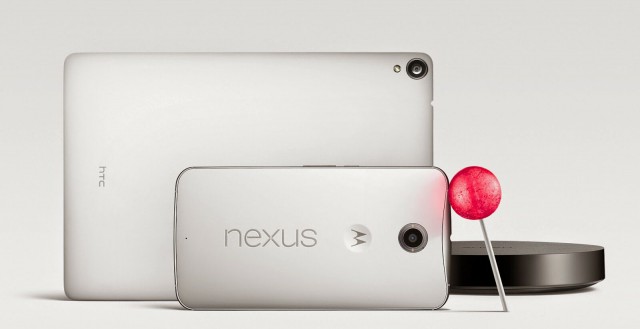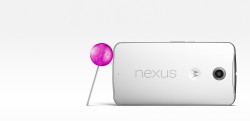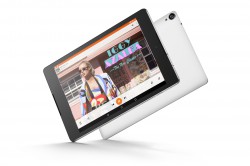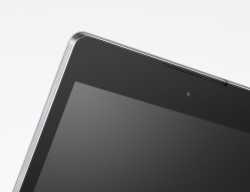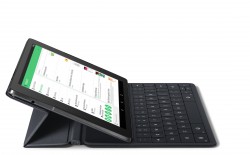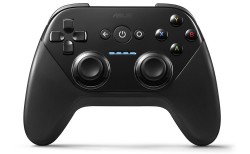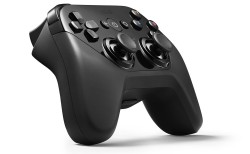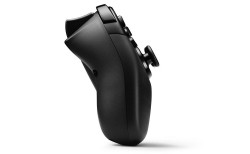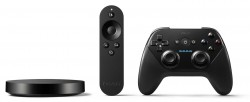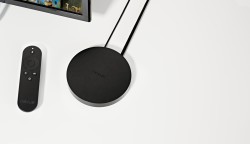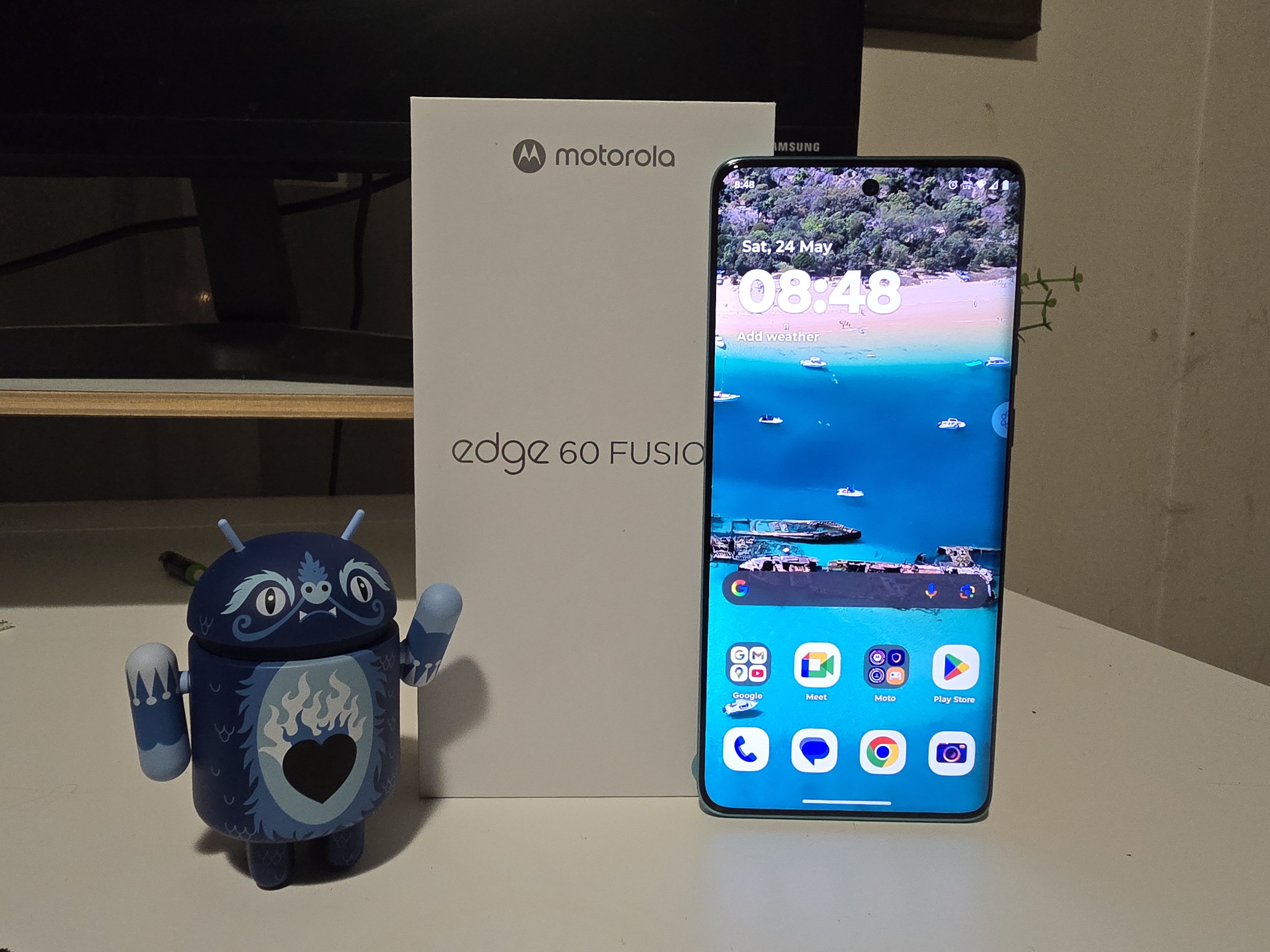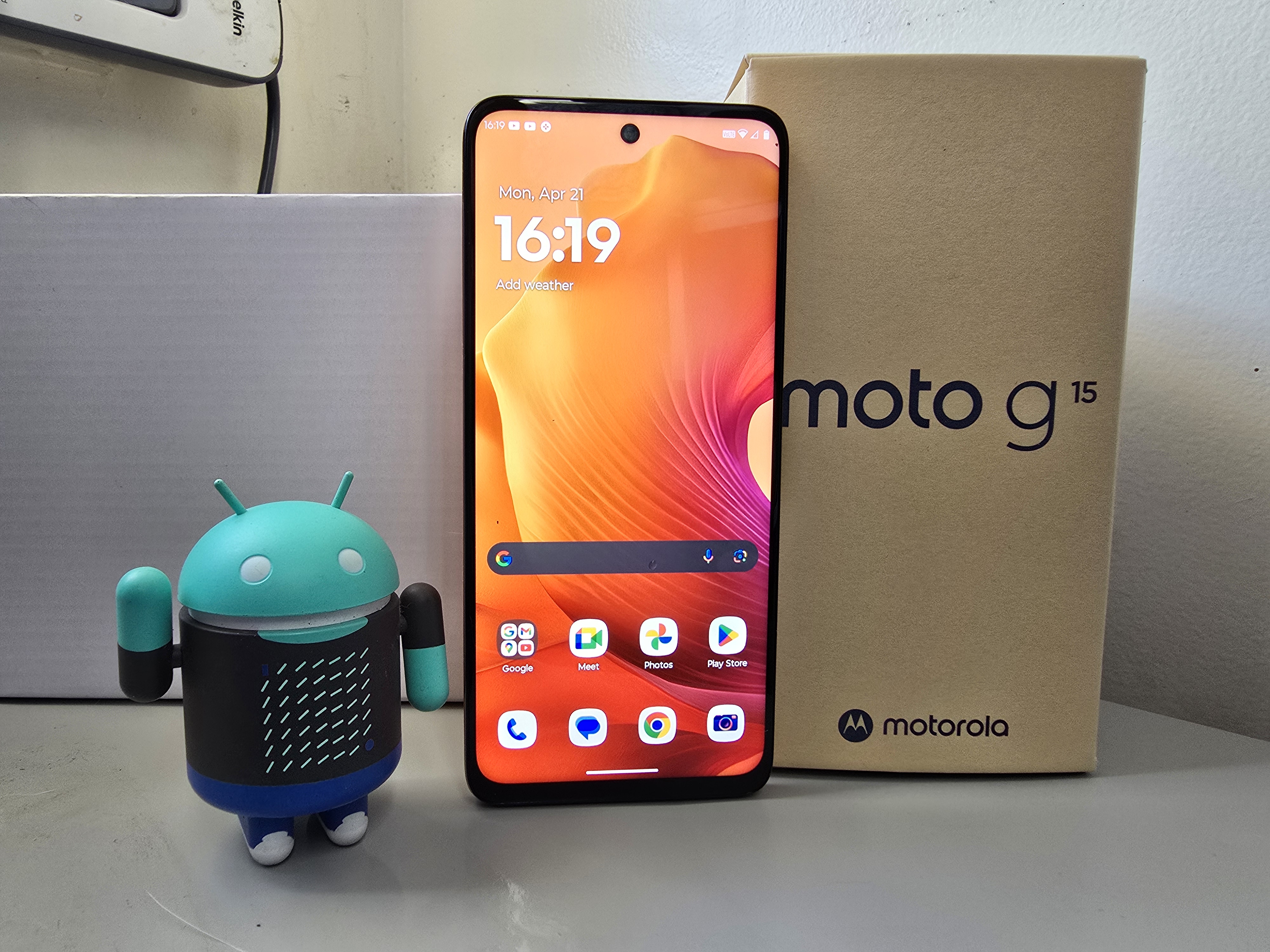
Google has just announced the latest members of its Nexus family, the Nexus 6 smartphone made by Motorola, Nexus 9 tablet made by HTC and surprised us all with the first Android TV device – the Nexus Player made by Asus. Each of the new devices runs Google’s new Android 5.0, finally officially christened “Lollipop”.
Click here check out our Android Lollipop coverage.
Google is embracing colour choice options from the beginning this year, with the Nexus 6 available in blue and white, and the Nexus 9 available in black, white or gold (sand). Each device has a black bezel on the front, regardless of your choice. The Nexus Player is a little different, though – it’s only available in black, but that should be fine as it hides amongst your A/V equipment.
Each of the new Nexus devices goes up for pre-order in the USA in a couple of days’ time – October 17 – and will be available in November. Actual final release varies by device, with retail availability also figuring into Google’s launch plans this year.
Pricing is only starting to make itself known, but it looks like the days of super cheap Nexus devices are coming to an end, with Motorola’s official blog naming a US$649 price for the Nexus 6.
As usual, there’s not yet any specific information on an Australian launch available but when we find any information we’ll let you know.
Nexus 6
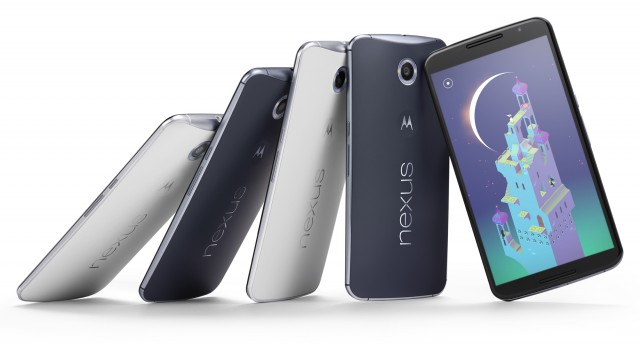
The Nexus 6 presented few surprises to what we already knew – or at least, suspected – from the last few weeks’ leaks.
Powered by a Snapdragon 805 quad-core 2.7GHz processor and an Adreno 420 GPU, the phone is effectively a big Moto X. There’s a 5.96-inch QHD AMOLED display with an impressive 493ppi housed inside a body that measures 159 x 83 mm across the face and up to 10mm thick in the middle and only 3.8mm at the sides. It all weighs 184 grams.
The rear camera is a 13MP camera with Optical Image Stabilisation and the same ring flash as the Moto X accompanied. Google’s HDR+ makes a return, with the Nexus 6 supporting “automatic HDR+” according to Motorola’s product page. This is accompanied by a 2MP front-facing camera, enough to handle HD video conferencing.
As with current Motorola devices, the phone features dual front-facing stereo speakers and the ability to use voice commands such as “OK Google” with the screen off.
On the connectivity side, the phone will support the LTE bands 1/3/5/7/8/9/19/20/28/41, which covers all the Australian bands except for the band 40 that Optus use for parts of Canberra. To access these networks you’ll use a Nano SIM, just like the Moto X. There is wifi 802.11ac 2×2 (MIMO) support as well as Bluetooth 4.1, and NFC.
The battery is 3220 mAh and boasts up to 24 hours talk time and 10 hours of internet use time while on LTE. It will have the possibility of charging with Motorola’s Turbo Charger promising up to 6 hours of use on only 15 min charging time.
There’s been some confusion regarding the presence of Qi charging, with Google not mentioning it at all on the official Nexus 6 page (leading to some disappointed and angry messages in the Ausdroid team hangouts), but Motorola on the other hand says there is Qi charging support on their own product page.
The Nexus 6 will come in 32GB and 64GB varieties in Midnight Blue or Cloud White.
As expected the phone will run Android 5.0, version Lollipop.
- 5.96-inch QHD AMOLED display – 2560×1440, 493 ppi)
- Quad core Krait 450 CPU @ 2.7GHz (Qualcomm Snapdragon 805 SOC), Adreno 420 GPU
- 3GB RAM
- 32GB and 64GB storage, no Micro SD
- 13MP rear camera with OIS, dual LED ring flash, f/2.0, 4K at 30fps
- Wi-Fi ac MIMO, Bluetooth 4.1, NFC
- Radios:
- GSM: 850/900/1800/1900 MHz
- WCDMA: Bands 1/2/4/5/6/8/9/19
- 4G LTE: Bands 1/3/5/7/8/9/19/20/28/41
- Dual front-facing speakers
- Qi wireless charging, Motorola TurboCharge
- Android 5.0 Lollipop
- 3220 mAh battery
- 82.98 x 159.26 x 10.06 mm, 184g
Nexus 9
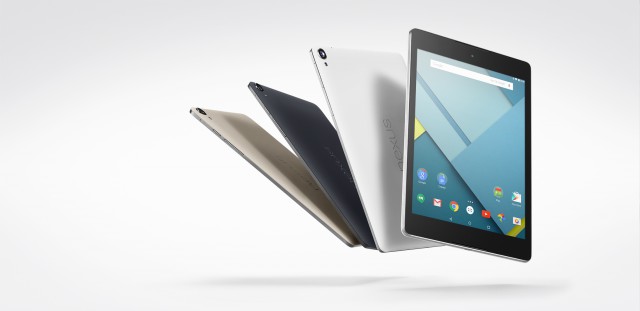
After the leaks of the last few weeks, the Nexus 9 held few surprises for us, but it’s great to be able to see the device properly.
The HTC-built Nexus 9 is a gorgeous 8.9-inch tablet carrying an IPS LCD display at 2048×1536 in the rumoured 4:3 aspect ratio protected by Gorilla Glass 3. It’s just under 8mm thick (or thin, if you like) and weighs just 425 grams (a fraction more if you buy the LTE version).
The Nexus 9 is powered by Nvidia’s Tegra K1 processor, making it the first 64-bit Android device. It’ll be available in 16GB and 32GB configurations. An LTE option will be available, and as with the Nexus 7 before it, we suspect this will be only be available on the 32GB model. LTE band support is not yet known.
As we’d hope for a tablet built by HTC, the company’s excellent Double Tap To Wake technology, first spotted on the One (M8) this year – makes an appearance. You won’t need to find the power button on the edge of this tablet to turn its screen on, answering a criticism of the Nexus tablet range going back two generations. Android Lollipop will also be able to wake the tablet when you say “OK Google”, or just pick it up.
Happily, HTC has also brought its BoomSound technology to the Nexus 9 in the form of front-facing stereo speakers. This marks the technology’s first appearance in tablet form, and is a welcome inclusion for anyone who’s ever tried to listen to music or watch a video on a Nexus 7.
Cameras don’t sound like anything to write home about at this stage. There’s an 8MP camera around back with an f/2.4 aperture and an LED flash while a 1.6MP camera with the same f/2.4 aperture graces the front of the tablet. They’ll see you through in a pinch, but Google’s still not embracing the tablet photography thing. The world will probably thank them for it.
As we’ve also seen rumoured, the Nexus 9 will have an official keyboard case. It’ll be attached to the back of the tablet magnetically, and can be positioned at different angles to suit your preference. It’ll be sold separately, and we don’t have
Finally, the Nexus 9 will come with a large 6,700 mAh battery. Google says that’s good for up to 9.5 hours of Wi-Fi video playback or browsing (8.5 hours browsing on LTE).
The Nexus 9 will be available in Indigo Black, Lunar White and the rather more pedestrian-sounding Sand colour, which seems from the product shots to be a muted gold.
- 8.9″ IPS LCD – QXGA (2048×1536), 4:3 aspect ratio
- 64-bit NVIDIA Tegra K1 processor, Kepler GPU
- 2GB RAM
- 16GB or 32GB storage
- 8MP rear camera with auto-focus, f/2.4
- 1.6MP front camera, f/2.4
- Wi-Fi ac MIMO, Bluetooth 4.1, NFC
- Cellular radios not yet known (quad band GSM, penta band HSPA, LTE)
- HTC BoomSound dual front-facing speakers
- GPS, Ambient light sensor, Gyroscope, Accelerometer, Magnetometer
- Android 5.0 Lollipop
- 6,700 mAh battery
- 153.68 x 228.25 x 7.95mm, 425g (Wi-Fi) / 436g (LTE)
Nexus Player
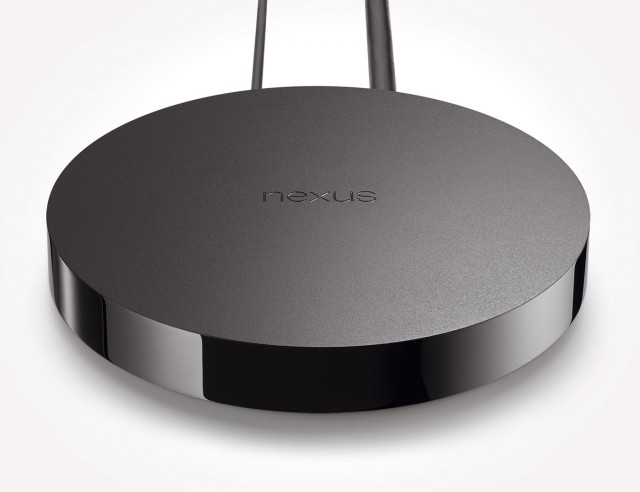
Last month, we reported on a mysterious Nexus player made by Asus that had popped up on the GFXBench website. Today, it made its first public appearance.
The Nexus Player is a puck-shaped device that is designed to sit alongside your current entertainment equipment and is accompanied by a voice-activated remote control and a gamepad that can be purchased separately.
The Nexus player is Google Cast ready, and can be used in much the same way as a Chromecast. Content is synced across all of your devices so you can start watching content on one device and finish it later on a different device. The apps that are supported are already extensive, considering the quick uptake we have seen with Chromecast.
The game controller is pretty much the same as the one we’ve seen packed in with the ADT-1 dev kit:
The device itself has a DC power port along with HDMI-out and a micro-USB 2.0 port. It has support for 802.11ac 2×2 (MIMO) and Bluetooth 4.1 and is only 120mm x 120mm wide and 20mm thick. With 8GB of storage and 1GB of RAM and powered by 1.8GHz Quad Core, Intel® Atom™ the Nexus Player is a welcome addition to the Nexus family – maybe Dan can finally retire his Nexus Q.
- 1.8GHz Quad Core, Intel® Atom™
- Imagination PowerVR Series 6 Graphics
- 1GB RAM
- 8GB Storage
- 18W DC power
- HDMI out (1920×1080@60Hz)
- Micro-USB 2.0
- Wifi 802.11ac 2×2 (MIMO)
- Bluetooth 4.1
- 235g
- 120mm x 120mm x 20mm
- Remote- “Bluetooth Smart”, 37mm x 140mm x 16mm, 40gm
Which new Nexus device will you make your own? Tell us in the comments!

